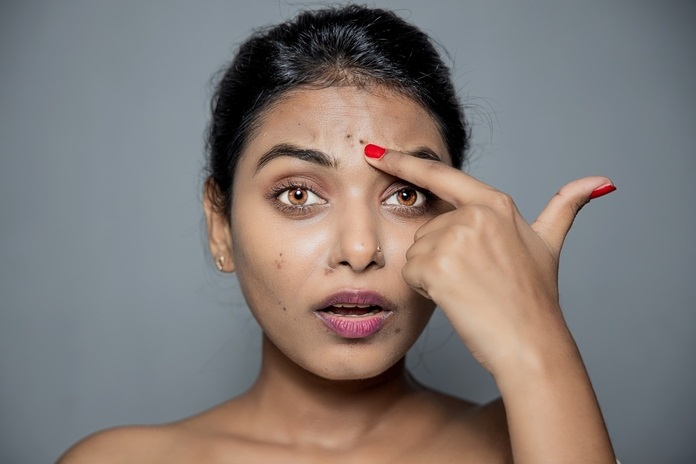Struggling with stubborn dark spots and blemishes resulting from pesky pimples can be incredibly frustrating and demoralizing. However, there’s no need to despair—this in-depth guide is packed with valuable information and effective tips that can help you conquer those dark spots for good. A Guide To Removing Dark Spots Caused By Pimples.
What are Dark Spots?
Dark spots, also referred to as hyperpigmentation or post-inflammatory hyperpigmentation (PIH), are patches of skin that appear darker than the surrounding skin. These patches can range in color from light brown to dark brown or black, depending on your skin tone and the severity of the hyperpigmentation.
They are a common concern in skincare, particularly for those who have experienced acne. While they can develop on any part of the body, they are most noticeable and troubling when they affect the facial skin. Although they do not pose a health threat, dark spots can impact self-confidence and be a cosmetic concern.
It’s important to note that dark spots should not be confused with acne scars, as dark spots involve skin discoloration, whereas acne scars involve changes in skin texture, such as indentations or raised areas.
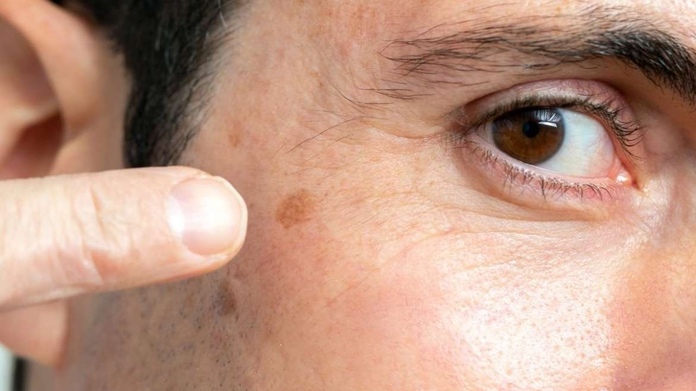
Why Do Pimples Leave Dark Spots?
Understanding the cause of dark spots left by pimples is crucial for preventing and treating them. The process typically unfolds as follows:
1. Inflammation: When a pimple forms, it triggers skin inflammation, which is the body’s natural defense response to the presence of bacteria and trapped sebum in the pore.
2. Melanin Production: The inflammation signals the skin’s melanocytes (pigment-producing cells) to produce more melanin in order to shield the skin from damage.
3. Excess Pigmentation: The surplus melanin lingers in the skin even after the pimple has healed, resulting in the formation of a dark spot.
Several factors can amplify the likelihood and severity of dark spots:
– Skin Tone: People with darker skin tones are more prone to developing dark spots due to their naturally higher melanin levels.
– Sun Exposure: Exposure to UV rays can stimulate melanin production, causing existing dark spots to become darker and more noticeable.
– Picking or Squeezing Pimples: These actions can exacerbate inflammation and lead to more pronounced dark spots.
– Hormonal Changes: Conditions like pregnancy or certain medications can increase melanin production.
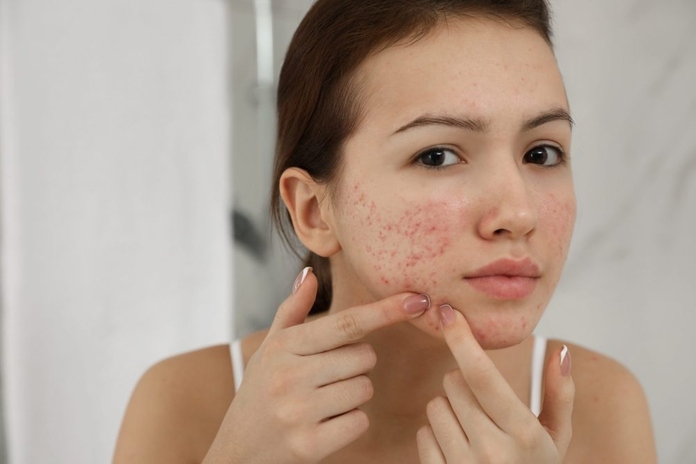
Home Remedies To Remove Dark Spots Caused By Pimples
Dark spots on the skin can be effectively diminished using various home remedies in addition to over-the-counter and prescription treatments. Let’s take a closer look at each remedy:
Lemon Juice
Lemon juice is known for its high vitamin C content and natural bleaching properties. The citric acid in lemon juice promotes skin exfoliation and stimulates the development of new skin cells.
How to use:
Squeeze fresh lemon juice and apply it directly to the dark spots using a cotton ball. Leave it on for 10-15 minutes before rinsing with cool water. This treatment can be used 2-3 times weekly. It’s important to note that lemon juice can increase skin sensitivity to sunlight, so it’s essential to apply sunscreen after use and avoid immediate sun exposure.
Aloe Vera
Aloe vera contains aloin, a natural compound that can lighten the skin. It also has rich antioxidant content and anti-inflammatory properties, which are beneficial for overall skin health.
How to use:
Extract fresh aloe vera gel from a leaf or use a pure aloe vera gel product. Apply the gel directly to the dark spots and leave it on for 30 minutes or overnight before washing off. For optimal results, use this treatment daily.
Turmeric
Turmeric contains curcumin, which possesses anti-inflammatory and skin-lightening properties. It can help reduce hyperpigmentation and achieve an even skin tone.
How to use:
Combine 1 teaspoon of turmeric powder with enough honey or milk to form a paste. Apply the paste to the dark spots and leave it on for 15-20 minutes before rinsing off with warm water. This treatment can be used 2-3 times weekly.
Potato Slices
Potatoes contain catecholase, an enzyme that can aid in skin lightening. They also have mild exfoliating properties.
How to use:
Cut a raw potato into thin slices and gently rub a slice on the dark spots for a few minutes. Allow the potato juice to dry on your skin, then rinse with cool water. This treatment should be repeated daily.
Baking Soda
Baking soda can serve as a skin exfoliant, potentially helping to fade dark spots by eliminating dead skin cells.
How to use:
Mix 2 tablespoons of baking soda with enough water to create a paste. Gently apply the paste to the dark spots and leave for 2-3 minutes before rinsing with cool water. Use this treatment a maximum of twice a week to prevent skin irritation.
Honey
Honey contains antibacterial and healing properties, as well as enzymes that can help lighten the skin over time.
How to use:
Apply raw honey directly to the dark spots and leave it on for 15-20 minutes before washing off with warm water. For best results, use this treatment daily.
Vitamin E
Vitamin E is an antioxidant that can aid in repairing skin damage and potentially fading dark spots.
How to use:
Break open a vitamin E capsule and apply the oil directly to the dark spots. Gently massage it into the skin, leave it on overnight, and rinse off in the morning. This treatment should be used daily.
Green Tea
Green tea is rich in polyphenol antioxidants, which can protect the skin from damage and potentially reduce hyperpigmentation.
How to use:
Prepare a cup of green tea and allow it to cool. Apply the tea to the dark spots using a cotton ball or place used, cooled tea bags directly on the affected areas. Leave on for 15 minutes, then rinse. Use this treatment twice daily.
Kojic Acid
Kojic acid is a natural skin lightener derived from fungi. It works by inhibiting melanin production.
How to use:
Seek out skincare products containing kojic acid or create a paste using kojic acid powder and water. Apply to dark spots and leave on as directed (usually 10-15 minutes) before rinsing off thoroughly. Use as directed on the product, usually 2-3 times weekly.
Licorice Root
Licorice root extract contains glabridin, which can inhibit melanin production and aid in fading dark spots.
How to use:
Utilize skincare products containing licorice root extract or apply a licorice root tincture directly to the spots. Leave it on overnight and rinse it off in the morning. For optimal results, use this treatment daily.
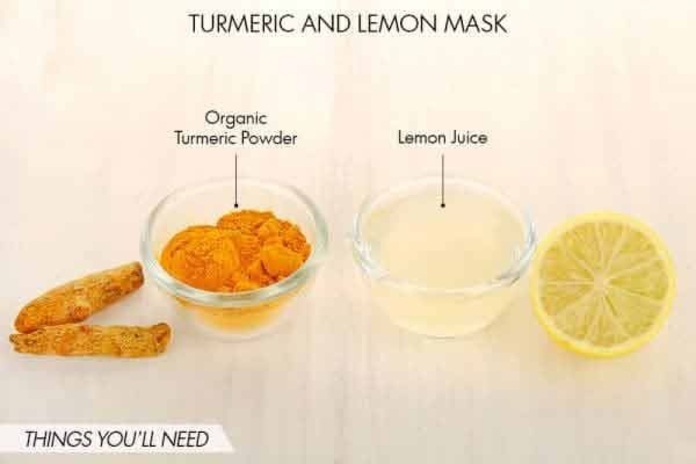
Skincare Routine To Remove Dark Spots Caused By Pimples
Cleansing
Start your skincare routine by gently cleansing your skin with a non-comedogenic cleanser both in the morning and at night. Look for a cleanser that contains salicylic acid or glycolic acid to not only cleanse but also exfoliate and brighten your skin. Avoid harsh scrubs or cleansers that may irritate the skin and worsen hyperpigmentation.
Exfoliation
Consider incorporating a chemical exfoliant into your routine 1-2 times per week. Choose products with alpha-hydroxy acids (AHAs) like glycolic acid or lactic acid, or beta-hydroxy acids (BHAs) such as salicylic acid. These acids help in getting rid of dead skin cells and promoting cell turnover, which is beneficial in fading dark spots.
Treatment
Utilize spot treatments or serums with ingredients known to address hyperpigmentation. Look for products containing Vitamin C, which is a powerful antioxidant that can inhibit melanin production. Niacinamide is also helpful in reducing pigment transfer within the skin, while Alpha Arbutin is a natural skin brightener. Additionally, consider products containing retinoids, which are Vitamin A derivatives that aid in boosting cell turnover. Apply these products following the instructions on the entire face or specifically on the dark spots.
Moisturizing
After cleansing and treatment, ensure to use a non-comedogenic moisturizer to keep your skin hydrated. Well-moisturized skin is healthier and better able to repair itself. Look for moisturizers with brightening ingredients like niacinamide or licorice root extract.
Sunscreen
Applying a broad-spectrum sunscreen with at least SPF 30 is crucial during the day to prevent and treat dark spots. Reapply every 2 hours when outdoors, as sun exposure can darken existing spots and lead to the formation of new ones.
Consider adding a retinoid product to your nighttime routine. Retinoids can assist in increasing cell turnover and fading dark spots over time. Start with a low concentration and use it every other night to allow your skin to adjust. Remember, consistency is key. Improvement in dark spots may take several weeks or even months to become noticeable.
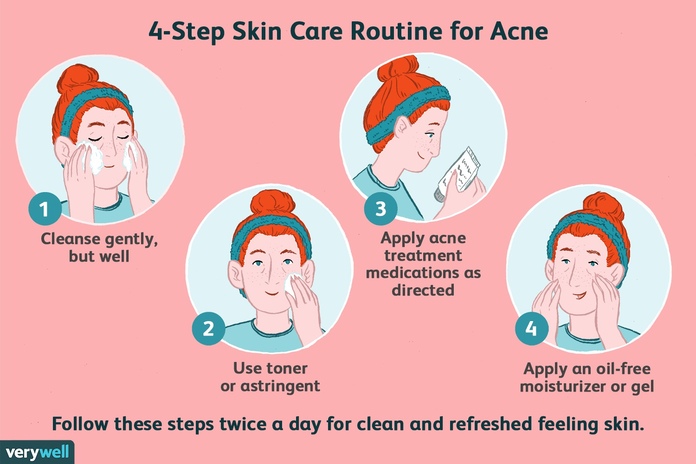
Conclusion
Caring for dark spots caused by acne can be a challenging process that demands patience, consistency, and a comprehensive approach. It’s important to understand that different treatments and methods work differently for each individual. What works for one person may not yield the same results for another.
Here are some key points to keep in mind:
1. Prevention is crucial. Address acne early, and avoid picking or squeezing pimples to prevent dark spots from developing. Always use sunscreen to protect your skin from further damage.
2. Patience is essential. The process of getting rid of dark spots takes time, usually spanning several weeks to months. It’s important to be patient and consistent with your chosen treatments.
3. Consistency is key. Stick to your skincare routine and treatments. Consistent application of products is essential for achieving results.
4. Protect your progress. Using sunscreen regularly is important to prevent existing dark spots from worsening and to minimize the appearance of new ones.
5. Consider seeking professional help. If home remedies and over-the-counter treatments don’t produce noticeable results after several months, it’s advisable to consult a dermatologist for more advanced and targeted treatments.
It’s important to remember that everyone’s skin is unique. Finding the most effective approach for your skin may involve some trial and error. Before using new products, always conduct a patch test and discontinue use if you experience any irritation or adverse reactions. With dedication, patience, and the right approach, you can achieve clearer, more even-toned skin.
FAQ
What is the typical duration for dark spots to diminish?
It can vary, but generally, it takes from a few weeks to several months for dark spots to fade, depending on the severity of the spot and the chosen treatment method.
Is it possible for dark spots to disappear naturally?
Yes, but it may take several months or even years. Engaging in active treatment usually accelerates the process.
What are the most effective non-prescription remedies for dark spots?
Products containing ingredients like vitamin C, niacinamide, or alpha arbutin are often successful in treating dark spots.
How can I prevent dark spots from forming after a pimple?
To prevent the formation of dark spots after a pimple, it’s important to refrain from picking at pimples, use sunscreen daily, and treat acne promptly to reduce inflammation.
Are there any quick solutions for dark spots?
Although there’s no immediate fix, consistent use of targeted treatments and proper skin care can yield results within a few weeks.
Can exfoliation aid in diminishing dark spots?
Indeed, gentle exfoliation can assist in the removal of dead skin cells and may hasten the fading process.
Is it safe to employ lemon juice on dark spots?
While lemon juice can be beneficial, cautious use is recommended as it has the potential to cause skin irritation and increase sensitivity to the sun.
When is it advisable to consult a dermatologist regarding dark spots?
It’s advisable to seek the advice of a dermatologist if there’s been no improvement with over-the-counter treatments after 2-3 months, or if the dark spots are worsening.
Also, read more about the Effect of the Addition of Chin Strap on PAP Compliance, Nightly Duration of Use, and Other Factors.
